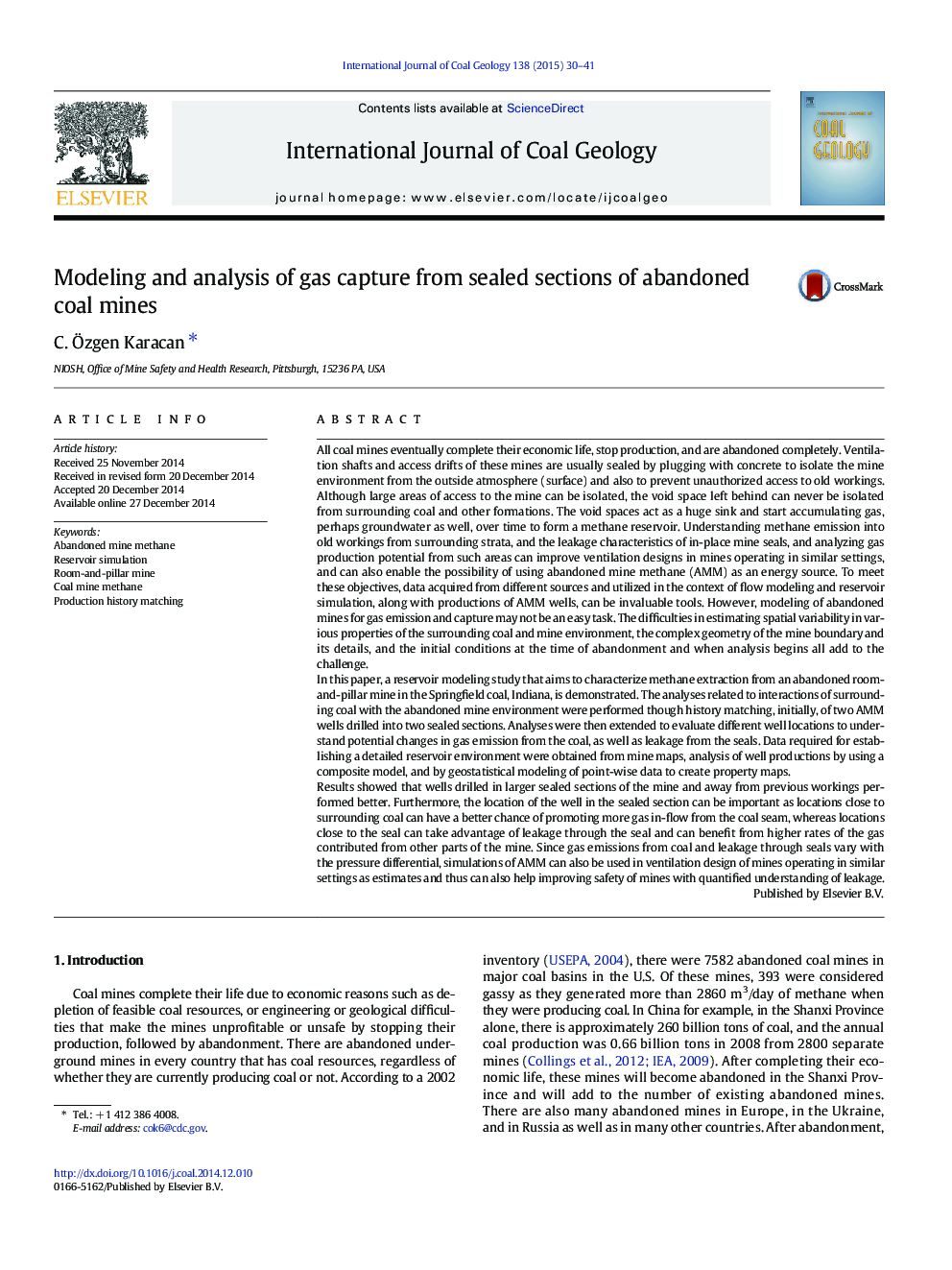| کد مقاله | کد نشریه | سال انتشار | مقاله انگلیسی | نسخه تمام متن |
|---|---|---|---|---|
| 1752976 | 1522560 | 2015 | 12 صفحه PDF | دانلود رایگان |
• A field-case study for modeling abandoned mine methane is presented.
• Use of data from different sources is demonstrated.
• Effect of seal leakage on the results is investigated.
• Contribution of gas from different sources to produced gas is evaluated.
All coal mines eventually complete their economic life, stop production, and are abandoned completely. Ventilation shafts and access drifts of these mines are usually sealed by plugging with concrete to isolate the mine environment from the outside atmosphere (surface) and also to prevent unauthorized access to old workings. Although large areas of access to the mine can be isolated, the void space left behind can never be isolated from surrounding coal and other formations. The void spaces act as a huge sink and start accumulating gas, perhaps groundwater as well, over time to form a methane reservoir. Understanding methane emission into old workings from surrounding strata, and the leakage characteristics of in-place mine seals, and analyzing gas production potential from such areas can improve ventilation designs in mines operating in similar settings, and can also enable the possibility of using abandoned mine methane (AMM) as an energy source. To meet these objectives, data acquired from different sources and utilized in the context of flow modeling and reservoir simulation, along with productions of AMM wells, can be invaluable tools. However, modeling of abandoned mines for gas emission and capture may not be an easy task. The difficulties in estimating spatial variability in various properties of the surrounding coal and mine environment, the complex geometry of the mine boundary and its details, and the initial conditions at the time of abandonment and when analysis begins all add to the challenge.In this paper, a reservoir modeling study that aims to characterize methane extraction from an abandoned room-and-pillar mine in the Springfield coal, Indiana, is demonstrated. The analyses related to interactions of surrounding coal with the abandoned mine environment were performed though history matching, initially, of two AMM wells drilled into two sealed sections. Analyses were then extended to evaluate different well locations to understand potential changes in gas emission from the coal, as well as leakage from the seals. Data required for establishing a detailed reservoir environment were obtained from mine maps, analysis of well productions by using a composite model, and by geostatistical modeling of point-wise data to create property maps.Results showed that wells drilled in larger sealed sections of the mine and away from previous workings performed better. Furthermore, the location of the well in the sealed section can be important as locations close to surrounding coal can have a better chance of promoting more gas in-flow from the coal seam, whereas locations close to the seal can take advantage of leakage through the seal and can benefit from higher rates of the gas contributed from other parts of the mine. Since gas emissions from coal and leakage through seals vary with the pressure differential, simulations of AMM can also be used in ventilation design of mines operating in similar settings as estimates and thus can also help improving safety of mines with quantified understanding of leakage.
Journal: International Journal of Coal Geology - Volume 138, 15 January 2015, Pages 30–41
